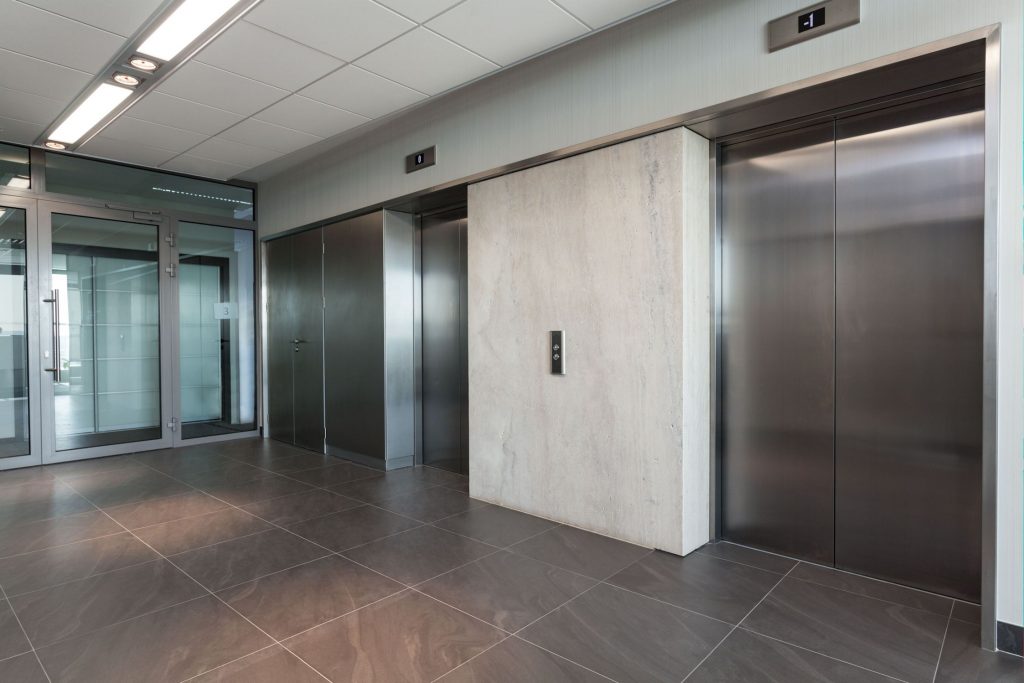 The International Building Code (IBC) and NFPA 101-Life Safety Code include different requirements for providing security and allowing egress from an elevator lobby to a tenant space. Because the IBC doesn’t currently include a section similar to NFPA 101 regarding elevator lobby egress, some states and local jurisdictions have modified the model codes in order to allow elevator lobby doors to be locked. It’s very important to know which code is being enforced and what requirements apply to the elevator lobby doors in a project’s jurisdiction.
The International Building Code (IBC) and NFPA 101-Life Safety Code include different requirements for providing security and allowing egress from an elevator lobby to a tenant space. Because the IBC doesn’t currently include a section similar to NFPA 101 regarding elevator lobby egress, some states and local jurisdictions have modified the model codes in order to allow elevator lobby doors to be locked. It’s very important to know which code is being enforced and what requirements apply to the elevator lobby doors in a project’s jurisdiction.
The 2021 edition of the IBC and previous editions require each elevator lobby to have a code-compliant means of egress (see below for an update to the 2024 edition). In some cases, an exit stair can be accessed directly from the elevator lobby, and the doors between the elevator lobby and the tenant space can be locked because the stairwell fulfills the requirement for a means of egress. When the door to the exit stair is not within the elevator lobby, at least one door must allow egress from the elevator lobby through the tenant space to an exit. In this situation, the elevator lobby door can not be locked on the lobby side, but a delayed egress lock may be an option, or the door could have an alarm for notification when it is used.
NFPA 101 includes a section specific to locking the doors between an elevator lobby and a tenant space, but as stated previously, this application is only allowed when NFPA 101 is the code being enforced, or when the state or local code allows elevator lobby doors to be locked. To learn about the criteria included in NFPA 101 for locks used on elevator lobby doors, read this Decoded article and then proceed to the review questions below.
Note: A change has been approved for the 2024 edition of the IBC, which will add a section similar to the one in NFPA 101 regarding elevator lobby egress doors. Check out this code update to learn more.
~~~
Review Questions
1. For locations where the 2021 IBC has been adopted, which of the following options WOULD NOT be allowed for an egress door serving an elevator lobby?
- Exit alarm
- Delayed egress lock (if allowed by the applicable use group)
- Passage set
- Fail safe lock released for egress by the fire alarm and power failure
2. For locations where NFPA 101 has been adopted, which of the following options WOULD be allowed for an egress door serving an elevator lobby?
- Exit alarm
- Delayed egress lock (if allowed by the applicable occupancy chapter)
- Passage set
- Fail safe lock released by the fire alarm and power failure
- All of the above
3. According to NFPA 101, which of the following is NOT required to unlock an elevator lobby door?
- Activation of the fire alarm system
- Manual fire alarm pull station
- Loss of power to the locking system
- Assistance from authorized personnel
Answers: 1 – D, 2 – E, 3 – B
